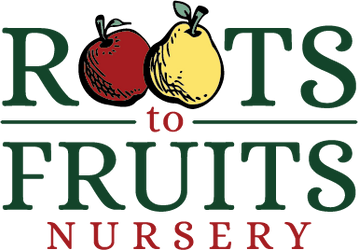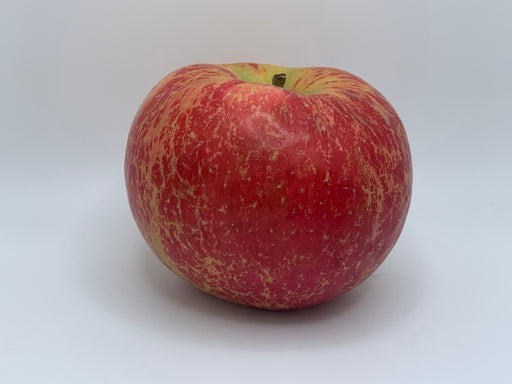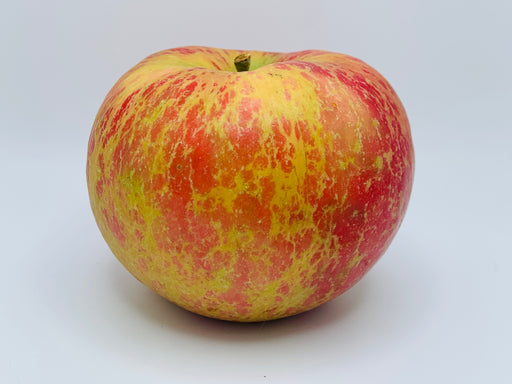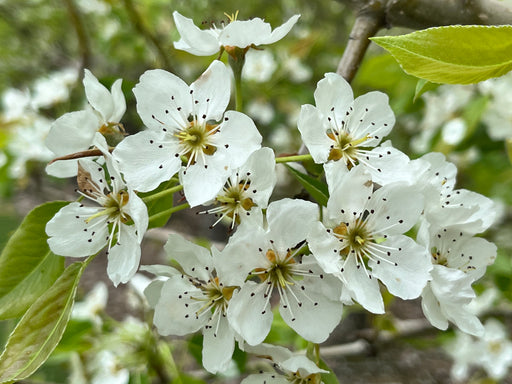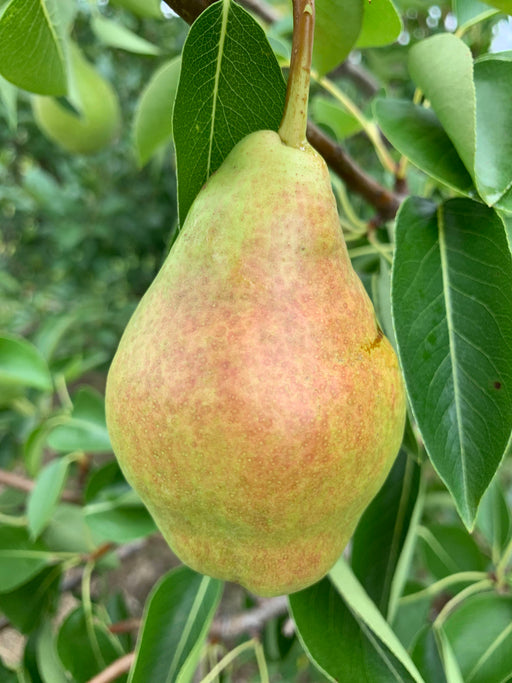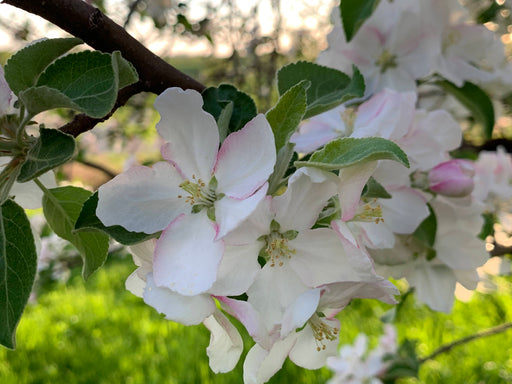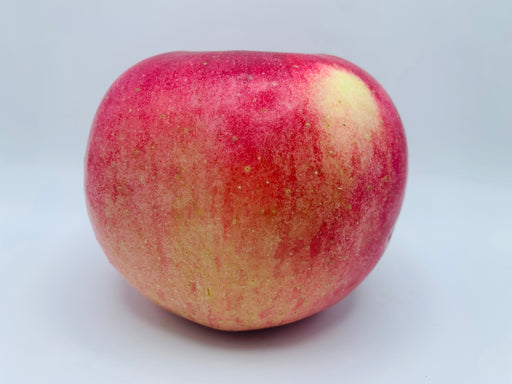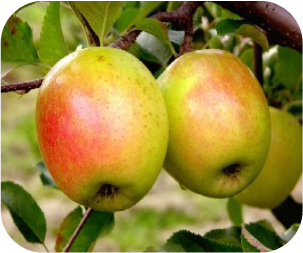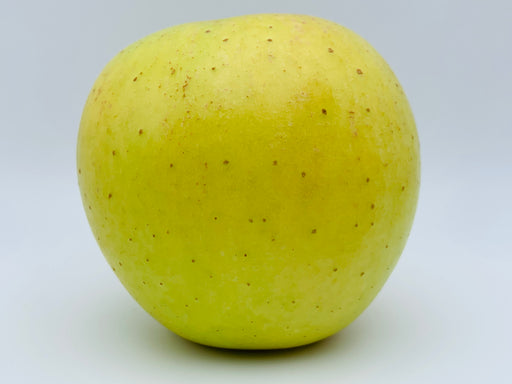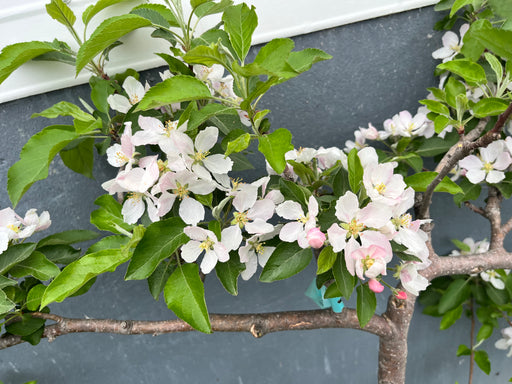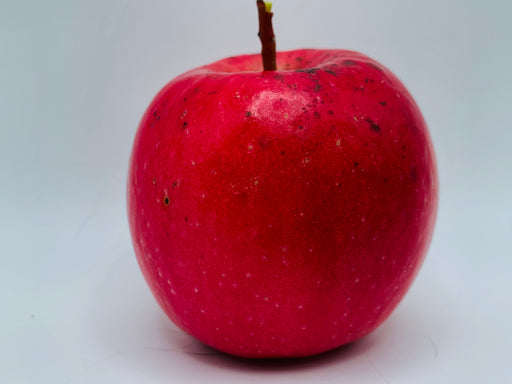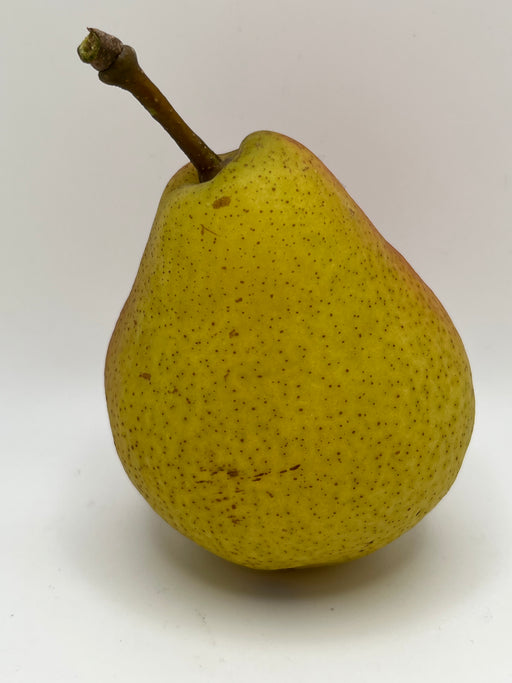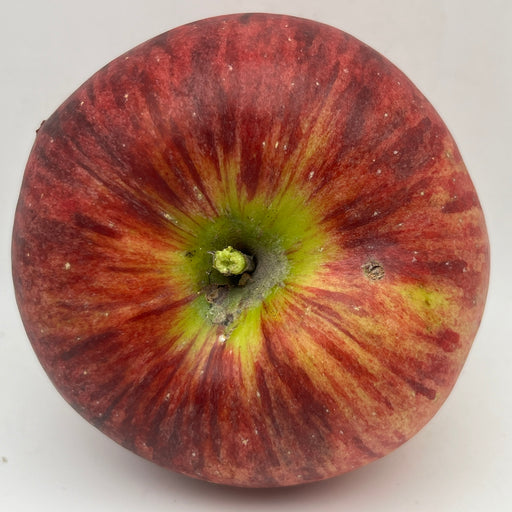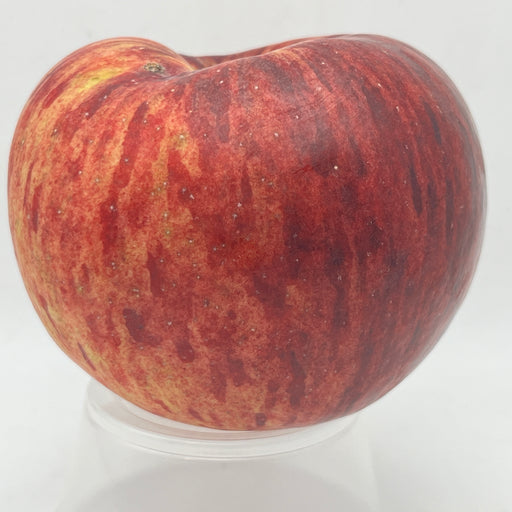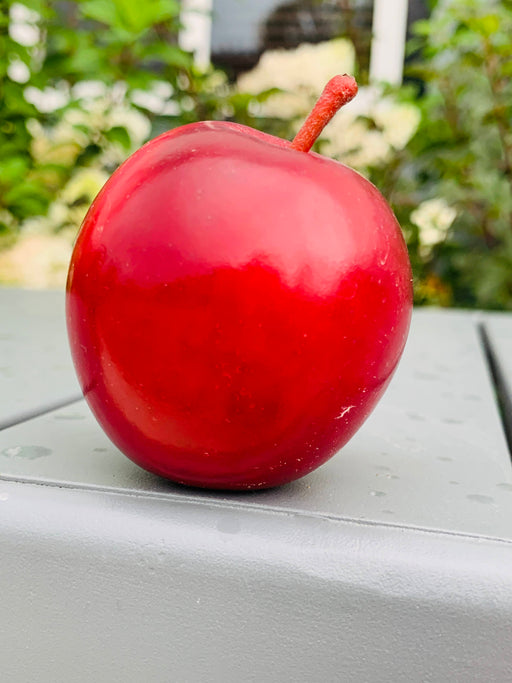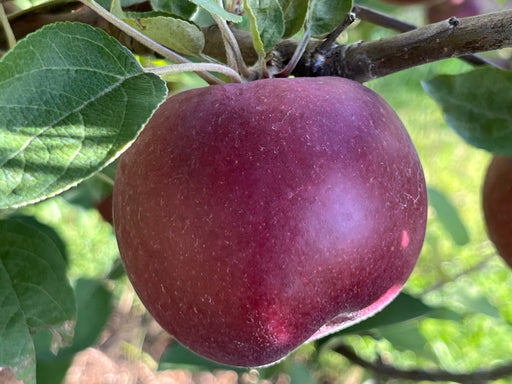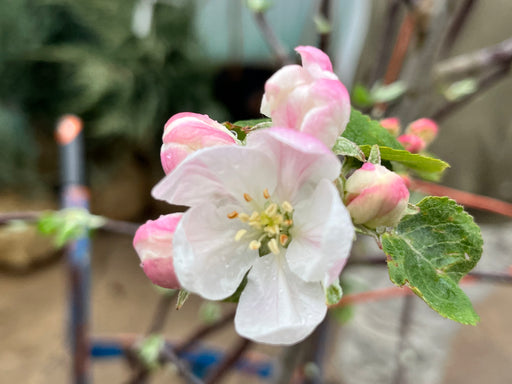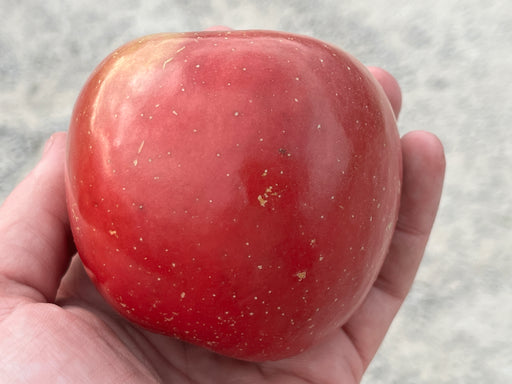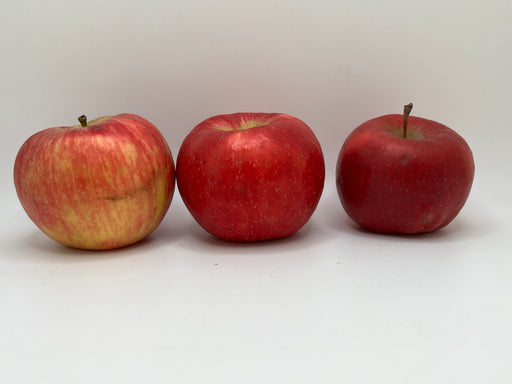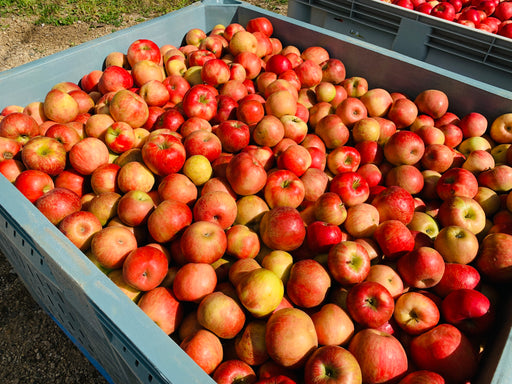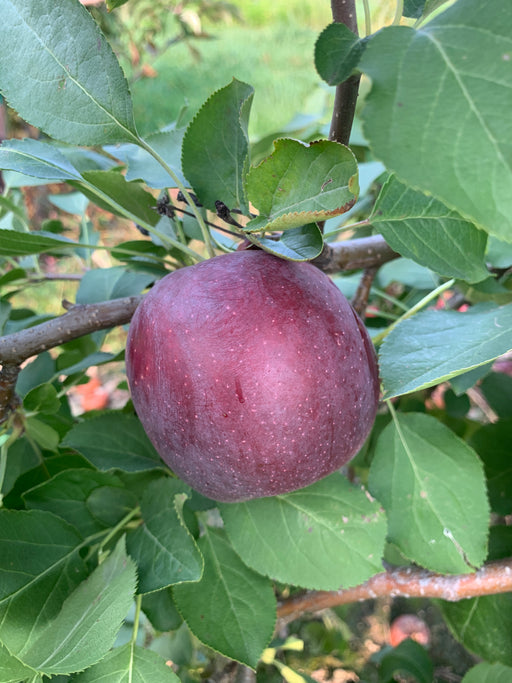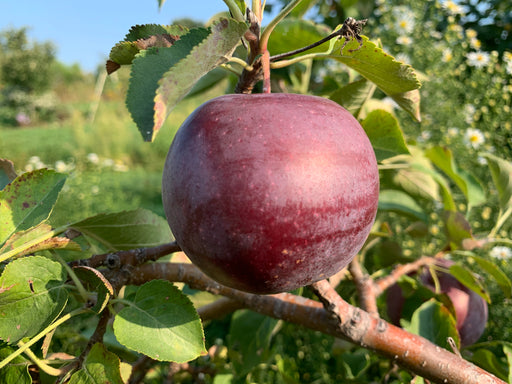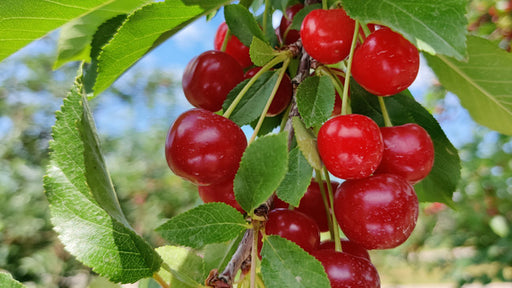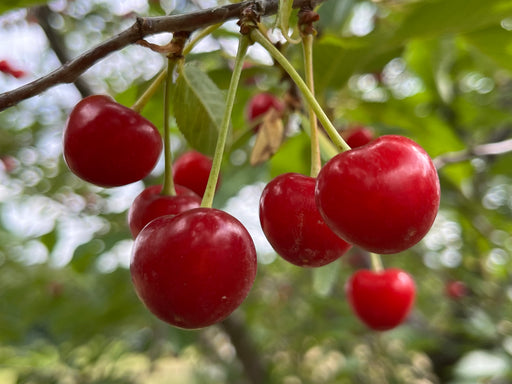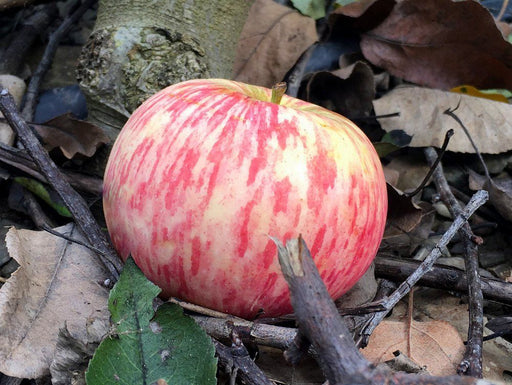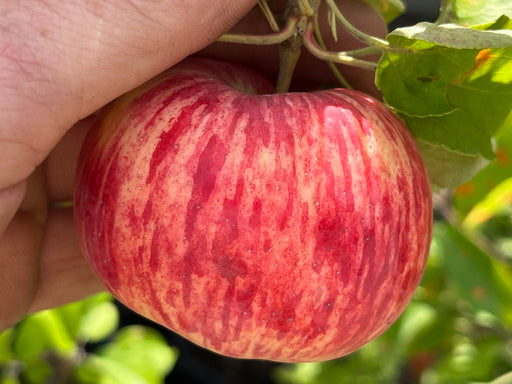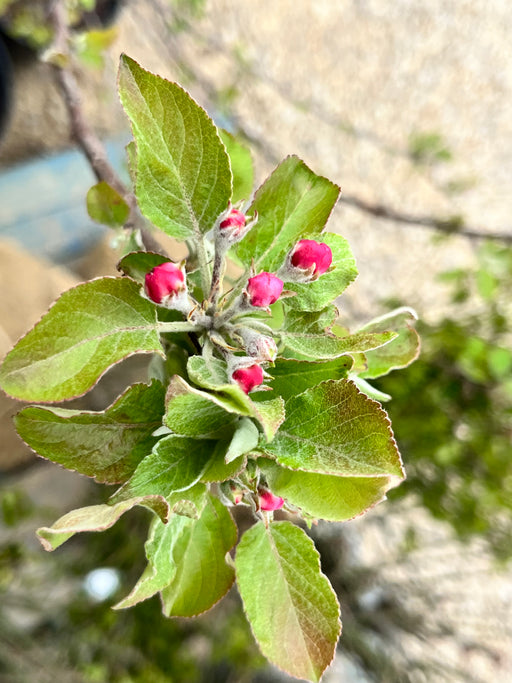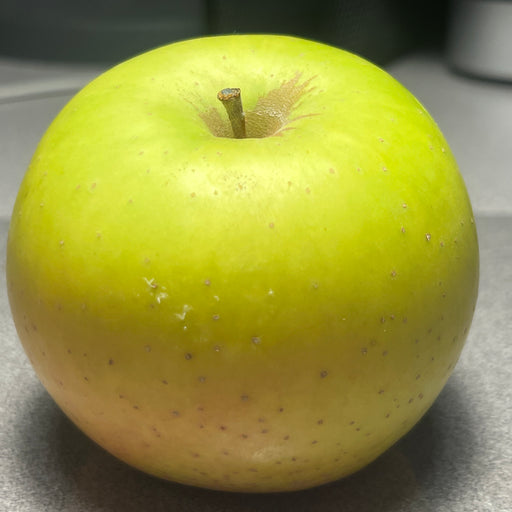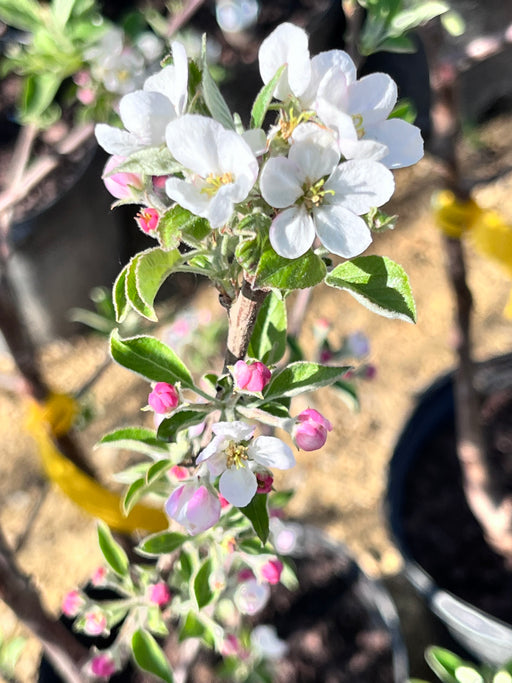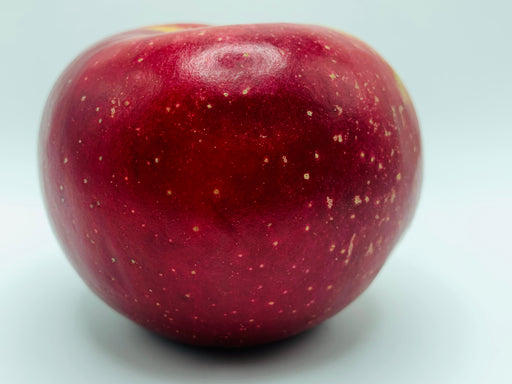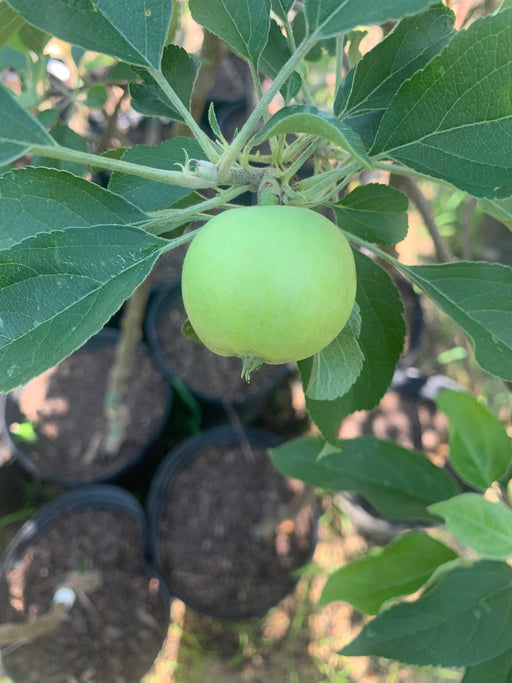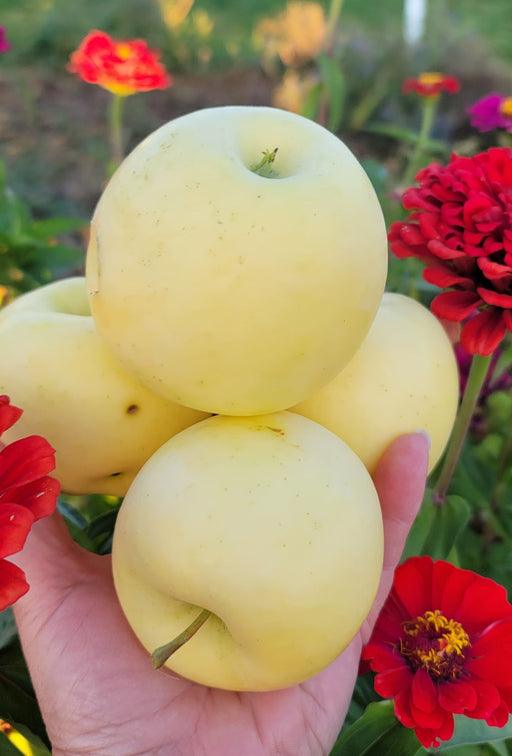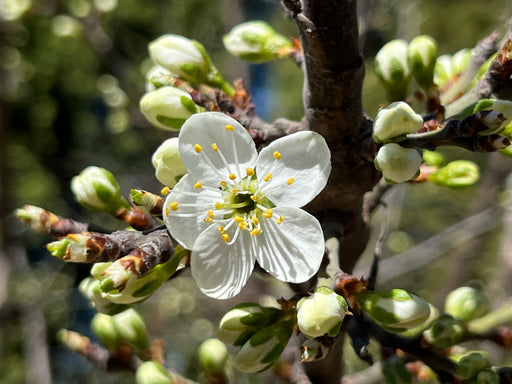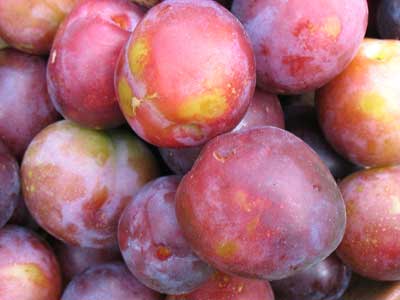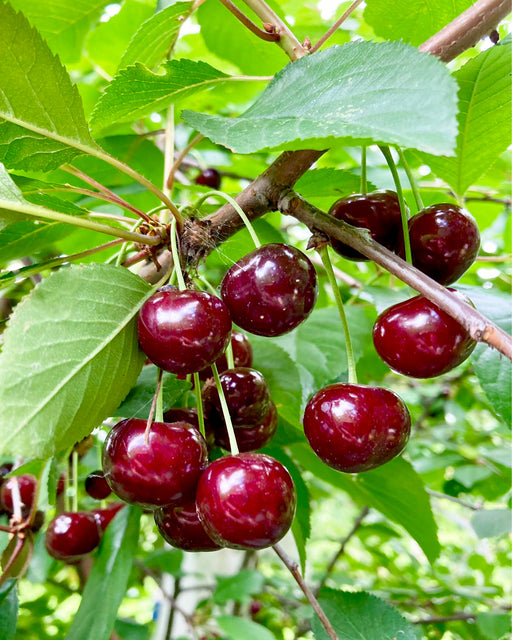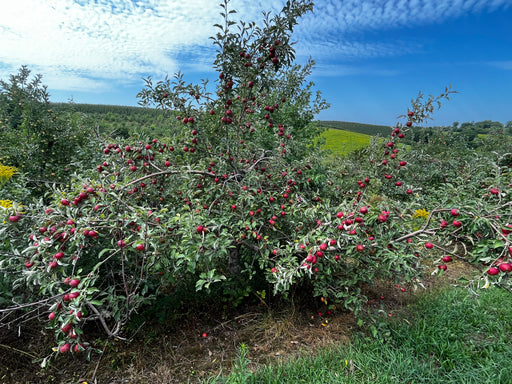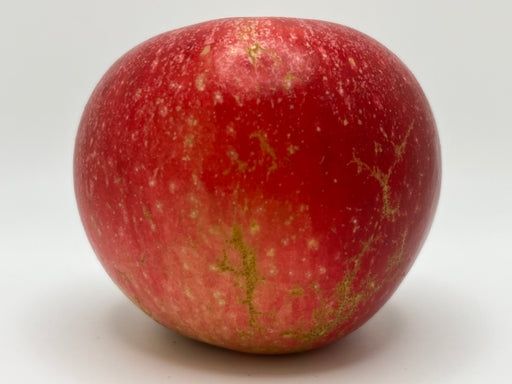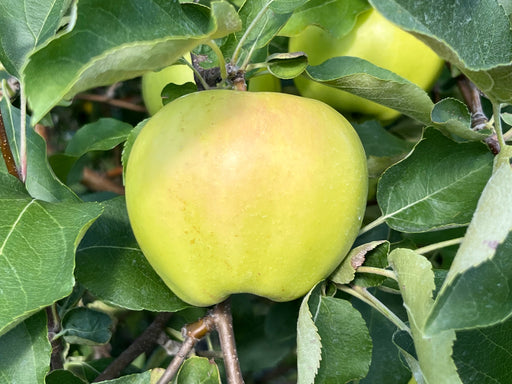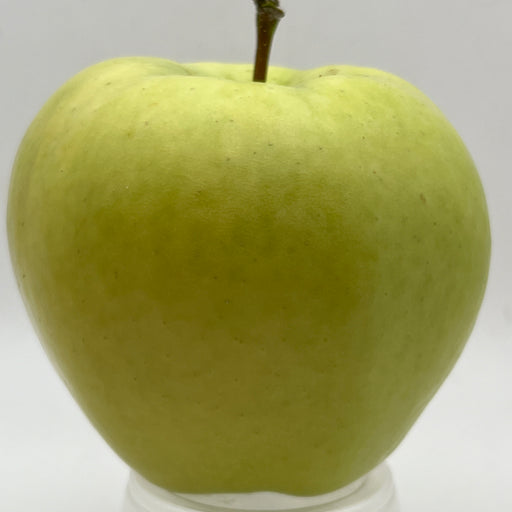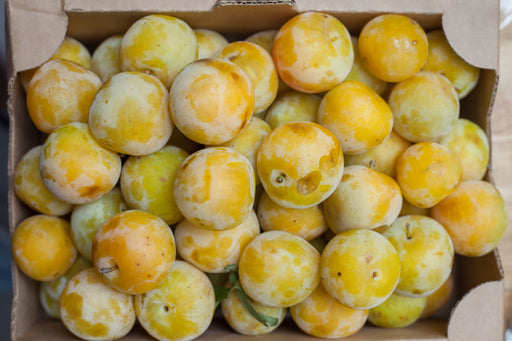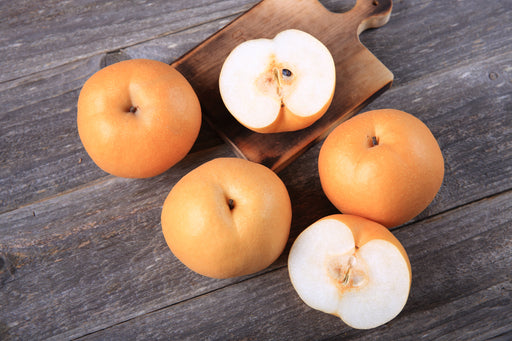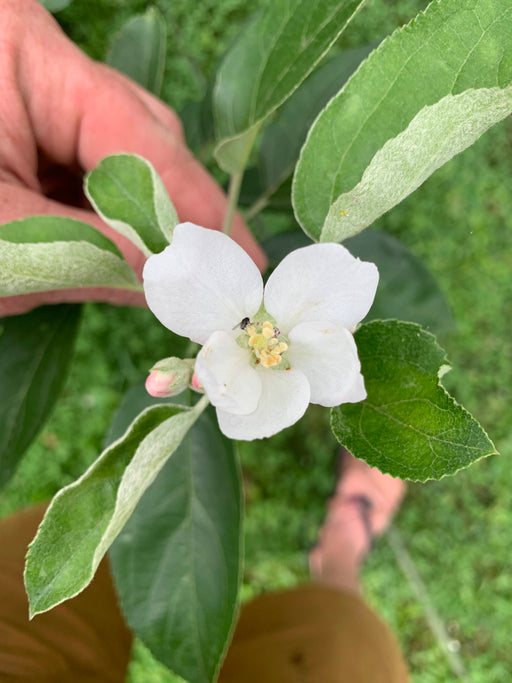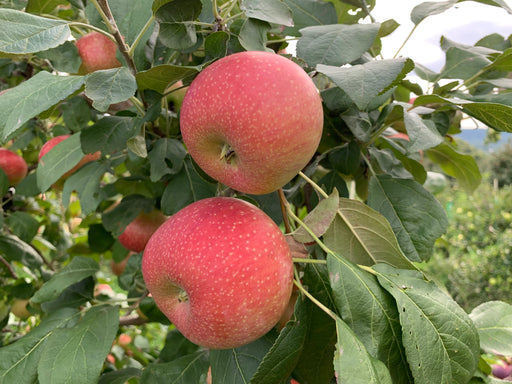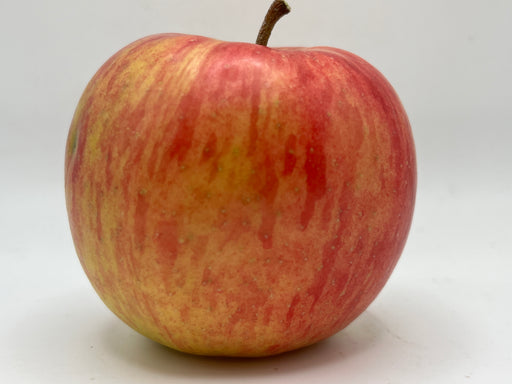Fruit Trees
Our apple trees, like many fruit trees, are propagated by grafting. There are two parts to an apple tree. The scion is the fruiting part of the tree, which gives you the variety of the apple, and the rootstock, which influences the mature size and hardiness of the tree, and determines the time it takes for the tree to fruit. We sell Standard, Semi-Dwarf, Dwarf, and Mini-Dwarf trees that do not require a lot of space and yet, will bear large fruit.
A few key notes on successful planting methods:
- Trees must be planted in well-drained soil
- Six hours of sunlight; full sun preferred
- Stake all trees for the first two years
- Dwarfs must have permanent stakes
- Tree guards should be used
- Plant at least two different apple tree varieties for Cross-Pollination
- Plant disease-resistant trees for less maintenance; we are happy to help make any suggestions you might need
We categorize our apple trees into at least five sizes: Petite, Maiden, Field Ready, Hand Select, and Container depending on the size of the tree. The Petite tree is our smallest graded tree less than 2 years in age; Maiden trees are usually 2 years old and are branchless. These are also called whips and will bear in 2-3 years. A Field Ready tree is 2-3 years old and might have some lateral branching, be thicker above the graft, and will bear in 1-2 years. The Hand Select trees are only about 20% of trees we have and are 3 year old trees, 6-9’ tall and can be heavily branched. You can expect fruiting on a Hand Select tree in about a year.
Honeycrisp Apple Trees
If you've ever heard of an apple- its probably the Honeycrisp. The University of Minnesota introduced this cold hardy apple variety in 1991 and it ...
View full detailsBartlett Pear Tree
First discovered as a chance seedling in southern England in 1770 by a gentleman named John Stair. First imported to the US in 1790 and planted on ...
View full detailsWolf River Apple Tree
This is an enormous apple. First discovered in 1875 along the Wolf River in Wisconsin- this apple soon became a popular baking apple because you on...
View full detailsGoldRush Apple Tree
Introduced from the Purdue-Rutgers-U of I Apple Breeding Program in 1994, the GoldRush apple is an excellent late season apple. Originally known as...
View full detailsGala Apple Tree
James H. Kidd first discovered the Gala Apple as one of several seedlings that results from a breeding program in New Zealand. The Gala first gaine...
View full detailsAyers Pear Tree
The Ayers pear (Pyrus communis 'Ayers') is a medium-sized pear cultivar that is commonly grown in the United States. It was developed in Georgia by...
View full detailsCortland Apple Tree
Created at Cornell University’s Agricultural Station in 1898, the Cortland Apple is a popular tree around the Great Lakes even today. It is now the...
View full detailsMcIntosh Apple Tree
One of the most popular apples in the world today, the McIntosh (sometimes spelled Macintosh) apple gained its roots back in 1811 at a farm in 'Upp...
View full detailsFuji Apple Tree
First breed in the 1930s, this apple has grown to be one of the most popular apples sold around the world. Its lengthy storage abilities and crisp ...
View full detailsCameron Select Red Honeycrisp Tree
Please see our main Honeycrisp page for a general description. The difference between the Cameron Select and the standard Honeycrisp is a matter of...
View full detailsArkansas Black Apple Tree
Introduced 1870 in the orchard of a Mr. Brathwaite, the fruit, a variety of Winesap, round and of medium size. The flesh is yellow, fine grained, c...
View full detailsBalaton Cherry Tree
A European sour cherry originating in Hungary in the 1970s. Developed through Communist Hungary's government for export, the Balaton emerged as the...
View full detailsDuchess of Oldenburg Apple Tree
This regal apple is named for Grand Duchess Catherine of Oldenburg, sister to Czar Alexander I and originates from the late 17th century in Eastern...
View full detailsHoneygold Apple Trees
Developed at the University of Minnesota Agriculture Research Center by crossing a Golden Delicious with a cold-hardy Haralson. The result was a Go...
View full detailsHaralson Apple Trees
This apple was first bred by the University of Minnesota as early as 1913 and became available to the public in 1923. It is named after one if its ...
View full detailsYellow Transparent Apple Tree
This apple was one of several cold hardy varieties imported from Russia to help with Western Expansion. In the 1870s, as Americans moved into colde...
View full detailsMethley Plum Tree
Japanese cultivar, medium-large, rusty maroon colored, vigorous grower, disease resistant, profuse bloomer in early spring, susceptible to early fr...
View full detailsBlack Tartarian Cherry Tree
First introduced to England from Circassia, Russia in the late 1700s by a man named Hugh Ronalds. Originally called Ronald’s Large Black Heart, the...
View full detailsKickapoo Spice Apple Tree
Developed in Gays Mills, WI at the Orchard of Bill and Marlene Meyer. A spicy apple that takes advantage of the Driftless Region's unusual topograp...
View full detailsGinger Gold® Apple Trees
In 1969, Hurricane Camille washed away vast swaths of Clyde and Frances 'Ginger' Harvey's orchard. In a valiant effort to recover as many seedlings...
View full detailsShiro Plum Tree
Introduced by horticulturalist Luther Burbank in 1899 and is part of 113 plums credited to his creation. The Salicina is native to China but grows ...
View full detailsChojuro Pear Tree
Discovered in Kawasaki, Japan in 1895 appearing redder than other pears nearby. Round and golden in color- the Chojuro pear is similar to other Asi...
View full detailsRed Gravenstein Apple Tree
The Red Gravenstein is a sport of the much older Gravenstein Apple. Originally planted in the 1670s, the Gravenstein apple was used as a cooking an...
View full detailsCreston Apple Tree
Developed in the 1990s by the Pacific Agri-Food Centre in British Columbia and is another offspring of the prodigious Golden Delicious. This apple ...
View full details